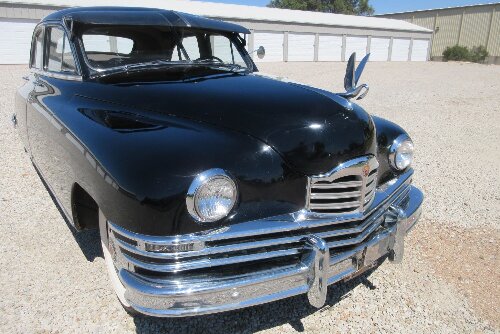|
Dual Master Cylinder
|
||||
|---|---|---|---|---|
|
Quite a regular
|
I have a question about changing out my Treadle Vac and replacing it with a dual master with power booster setup. I know this topic has been discussed many times in the past, but I want to be sure everything will work before I make the change. I personally don't have anything against a Treadle Vac when they are working, since mine stops decent. However, it is going on 20 years since the previous owner installed this one when the car was restored in 2002-2003, and I'm looking to change to something I can trust more since where I live has a lot of mountains to go up and down as well as a lot of traffic. I found a rear wheel cylinder leaking a few days ago, and want to change to a dual master and booster while I'm already redoing part of the brake system.
In one thread on here, I saw where someone used a dual diaphragm booster and a Volkswagen remote master cylinder and attached them with a fabricated an adapter plate join the booster and master cylinder. Link to thread: Volkswagen Power Brake Setup I also looked at Craig's Panther project before the site went down and saw how he used a remote fill master and a dual diaphragm booster. He also changed his pedal setup. Link to Craig's site in Web Archive I found: Craig's Power Brake Conversion I then researched some more and found a thread on an Oldsmobile website of a 55 Olds that had an original BTV unit installed in the same location as the Packard with a 1:1 ratio pedal. He did basically the same conversion that Craig did. He used a dual remote master cylinder, single diaphragm booster instead of dual booster. He converted to disc brakes on the front, but I would probably leave mine drum since it is not easy to change a Packard to discs. He also used a proportioning valve, but I don't think I'll need that either since I would be staying with drums. I might need to 10 lb pressure check valve, but I'm not sure. The guy with the Olds originally altered his factory brake pedal like Craig did, but he went back to the original pedal after not liking the setup of the pedal he made. He said it stops well even with the 1:1 ratio that the Olds has in common with the Packard. Link to Olds brake thread: Oldsmobile Under Floor Power Brake Conversion My car is a 56 400, so I don't think my brake pedal is the same as a 55 like Craig originally had. I'm thinking about following a similar process to what the Oldsmobile guy did. One question I had would be what I would need to do with the brake light/torsion level switch? On another note, I saw where the VW master cylinder I referenced had the ability to use the factory switch. I researched and saw a dual VW master cylinder listed on eBay. Can this VW master be used with the original switch? It says it is a 3/4" bore instead of the 1" that Craig and the Olds person used. Would this be better or worse? Also could this dual VW master be used with a booster to adapt it to the plate in the floor of the Packard? Link to VW master on eBay: Remote Dual VW Master Cylinder Another VW Master: VW Dual Master Remote Fill Does anyone have any suggestions, or has anyone completed any of conversions that are similar?
Posted on: 2021/4/24 11:44
|
|||
|
||||

Hello and welcome to Packard Motor Car Information! If you're new here, please register for a free account.







